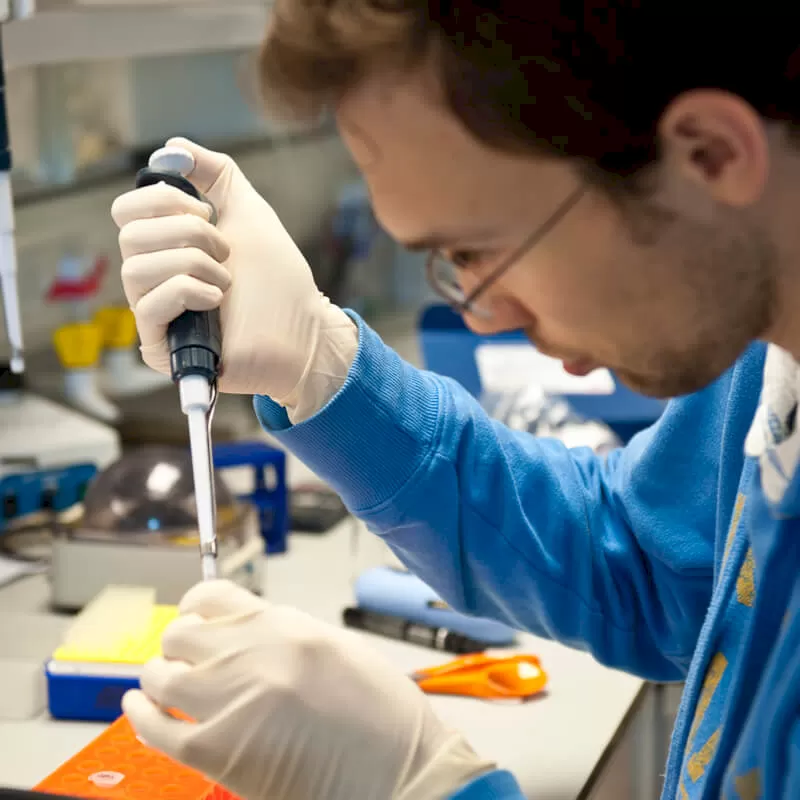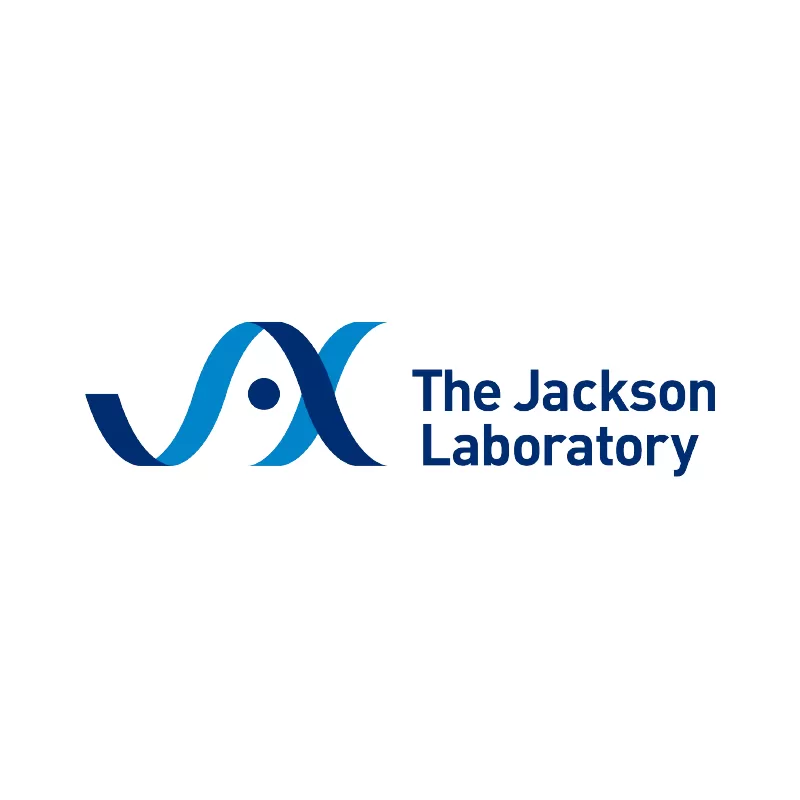Scientific Initiatives
Our understanding of the human genome and genetic-based treatments for disease has evolved significantly since the genetic mutations in MECP2 that cause Rett syndrome were identified, and every day we are closer to developing a treatment for our loved ones. However, we currently face two major obstacles that only laboratory science can solve: effective delivery of a treatment to the brain and the regulation of the MECP2 protein.
All of our Cure 360 strategies will require the delivery of therapeutics to the brain and, ideally, the ability to regulate how much of the MECP2 protein is made. Our scientific resources target these current challenges by increasing our foundational knowledge base, exponentially increasing our chances of success.

Understanding MECP2
The MECP2 Gene and Rett
The MECP2 gene makes MECP2 protein, which is found in high concentrations throughout the brain. Despite significant progress in identifying and understanding MECP2 mutations, we do not yet know how alterations in the MECP2 gene cause Rett's particular constellation of symptoms.
There are still lessons to learn about how the MECP2 protein works in the brain and, in doing so, create a platform of knowledge likely to prove important for drug development.
To accelerate progress, we created the MECP2 Consortium in 2011, bringing together three powerhouse scientists: Dr. Adrian Bird from the University of Edinburgh, Dr. Michael Greenberg from Harvard University, and Dr. Gail Mandel from Oregon Health and Sciences University. The Consortium was designed to end years of laboratory isolation and create an atmosphere of information sharing to help quicken research findings.
Much of what has been learned about MECP2 and its function is due to the work of the MECP2 Consortium.
Rett Syndrome Gene Therapy Proven to Work
The Mandel and Bird labs showed, for the first time, a dramatic reversal of symptoms in fully symptomatic Rett mice using gene therapy techniques that could be used in people. This seminal research provided the foundation and insights that eventually led AveXis/Novartis to pursue Rett syndrome.
RNA Editing to Correct Mutations
The Mandel lab has demonstrated that it is possible to correct specific mutations at the RNA stage, before the protein is synthesized. The lab recently showed high levels of editing in Rett mice neurons. Next up is showing symptom improvement in mice.
Novel Binding Partner in MECP2
The Bird lab discovered that the function of the Rett protein, MECP2, depends on its ability to recruit a novel binding partner, NCoR/SMRT to DNA. Disrupt that ability and the symptoms of Rett ensue.
Long Gene Misregulation Discovered
The Greenberg lab built on the work of the Bird lab and discovered that MECP2 has a unique role in the regulation of very long genes. These very long genes are predominantly expressed in the brain and appear to be critical for normal brain function.
MECP2 Binding
Early findings from the Bird group upended the prior view of MECP2 as a gene-specific repressor, showing that instead MECP2 was present at extremely high levels in neurons and binds broadly across the neuronal genome.
The Growing Toolbox of Rett Mouse Models
The Bird lab has created mouse models for common human mutations and found correlations between mutation and severity and protein stability. In addition to increasing our understanding of how the mutations cause Rett syndrome, these humanized mouse models are also proving useful for assessing therapeutics, such as our gene therapy program, that focus on restoring normal human MECP2. Furthermore, this investment will be leveraged by research in other labs as the mouse models are available to scientists worldwide.
The Pathophysiology of Rett Syndrome
The Greenberg lab discovered sites on MECP2 that are modified in response to neuronal activity. Because neuronal activity is critical for normal neurodevelopment and function, the lab is investigating how these activity-dependent modifications of MECP2 are relevant to the pathophysiology of Rett.

Regulation of MECP2
Protein Levels
Why we need to regulate the MECP2 protein
The MECP2 protein is often referred to as a goldilocks protein, as you need just the right amount — too little leads to Rett syndrome and too much likely contributes to MECP2 duplication syndrome. For certain therapeutic strategies we are pursuing, such as gene therapy, it may be important to regulate the amount of MECP2 protein that is produced in each cell. Therefore, we’re funding labs that are developing feedback loops to ensure proper dosage of MECP2.
Efforts to regulate the MECP2 protein
Dr. Steve Gray, PhD, has developed a mechanism to regulate how much MECP2 protein is made on a cell by cell basis. This mechanism called, miRARE, is incorporated into TSHA-102, the gene replacement product under development by Taysha Gene Therapies. miRARE was developed by Steve Gray with RSRT funding through the Gene Therapy Consortium.
Dr. Stuart Cobb, PhD, from the University of Edinburgh, has developed a feedback loop mechanism that aims to normalize the expression of MECP2 across cells. The system essentially aims to expand the therapeutic window so that MECP2 can be delivered to a greater percentage of brain cells without overexpressing the protein in individual cells.
Dr. Michael Elowitz, PhD, from Caltech is developing a feedback circuit with a failsafe switch that destroys excess MECP2. Based on feedback circuits found in nature, the Elowitz team has developed synthetic circuits that can react to and regulate levels of MECP2. In other words, the circuit can sense when there are higher levels of MECP2 than are needed and get rid of the excess. Regardless of level of gene dosages, the circuit can maintain a relatively fixed level of the protein. These circuits will ensure that no matter how many copies of the MECP2 gene are delivered, the right amount of MECP2 protein will be expressed in the cell.

Delivering Treatment
to the Brain
Viral and non-viral delivery
Rett syndrome is a neurological disorder, so any therapeutic will need to be delivered to the brain and will need to access as many cells as possible. Delivery of therapeutics to as many brain cells as possible is therefore a crucial objective.
One avenue for delivery is through viruses, which naturally infect specific cell types. The current gold standard for delivering therapeutics to the brain is a virus called adeno-associated virus serotype 9 (AAV9), which infects neurons relatively well and does not cause human disease. AAV9 is already in use for other diseases.
AAV9, however, has a number of limitations. First, there is limited cargo space within the AAV capsid, the virus “shell,” to package certain therapeutics. AAV9 has sufficient cargo space for gene replacement and some of our other approaches, but probably not all. Secondly, AAVs are very costly to manufacture, and this results in expensive therapeutics. Thirdly, AAVs may not hit as many brain cells as we would like. Lastly, AAVs can induce an immune response that raises concerns regarding the safety of repeat dosing, should that be needed.
At RSRT we are vigilantly scouting for alternative delivery platforms that do not have these challenges, and we are currently evaluating a number of them, including lipid nanoparticles, polymer-based nanoparticles, exosomes, and cell-based delivery.
Viral delivery collaboration
The Bespoke Gene Therapy Consortium (BGTC) is a public-private collaboration led by the Foundation for the National Institutes of Health and the National Institutes of Health (NIH), intended to accelerate the delivery of new gene therapies to patients with rare diseases that currently lack effective treatments. The BGTC effort aims to make gene therapy more accessible by creating a development template that can be used repeatedly to expedite the delivery of novel therapies for many different genetic disorders, with a focus on rare disorders such as Rett syndrome.
A primary focus of the BGTC is addressing the challenges that still exist with using AAV vectors to deliver treatments to targets such as brain cells. The BGTC will support a series of research projects and clinical trials of new gene therapies, to be conducted by the NIH, to create new tools and resources for AAV clinical development and regulatory evaluation of future AAV therapies.
The collaboration of scientists, industry representatives, regulators and advocacy groups such as RSRT will work to create transparency around methodology and regulatory requirements, and, we hope, reduce cost and streamline the ability to use AAV as a delivery technology, ultimately expediting the availability of a curative therapeutic for Rett syndrome.
Advances by the BGTC will benefit all six of RSRT’s curative strategies because they all require delivery of an agent that can target the root cause of Rett syndrome, MECP2 mutations. Taysha Gene Therapies, one of the companies spearheading RSRT’s gene replacement strategy to cure Rett, is also a member.
The BGTC is the latest initiative to emerge from the Accelerating Medicines Partnership Program, a public-private collaboration among the NIH, the Food and Drug Administration, the pharmaceutical industry, and patient organizations to speed drug development across different diseases. At a cost of $76.5 million over five years, the BGTC brings together the resources of partner organizations spanning the public, private, and nonprofit sectors.

Scientific Resources
From mouse genetics to human genetics
Before we can test therapeutic approaches in humans, labs and biopharmaceutical companies test them in mice to help determine efficacy and safety. To date the mouse models of Rett syndrome have taught us a great deal about the disorder and have been extremely valuable in demonstrating the reversibility of Rett. They have also been the proving ground for a variety of therapeutic approaches, including gene therapy
Jackson Laboratories (Jax) is the gold standard for research focused on mouse genomics to cure human disease. Aside from advancing breakthrough technologies such as in vitro fertilization, stem cell and transplant therapies, Jax is a repository and distributor for more than 11,000 mouse models as well as in-house services to facilitate biomedical research around the globe.
Our goal in engaging Jax for Rett syndrome research is to streamline the important work in mouse models across the Rett research field by creating critical models in comparable genetic backgrounds, along with centralized and standardized characterization of Rett phenotypes.
This resource saves time and money, and eliminates the need for separate groups to duplicate the creation of these key mouse lines. It also allows mutant characterization, phenotype assessment, and behavioral testing to be performed centrally by experienced raters, and provides credible and reliable evaluation of potential therapeutics from academia and industry alike.

